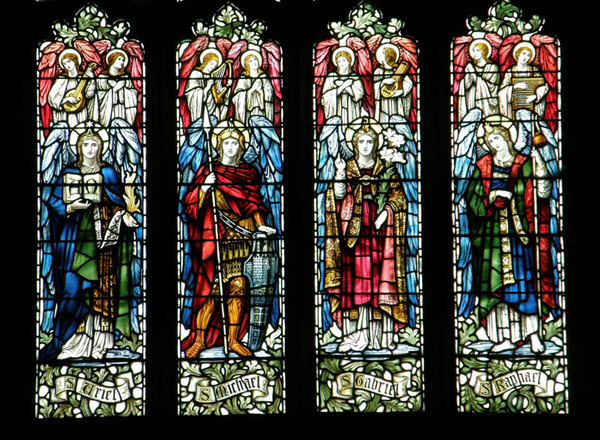Understanding Your Personality: Discover How To Grow Using The Rule Of Four
By Robert Adams
April 25, 2017 • Fact checked by Dumb Little Man

The ‘rule of four’ has been around for centuries. The first recorded reference to it was Empedocles’ four elements — Earth, Air, Fire and Water — which he related to the mythical gods that ruled the world 444 years B.C.
Hippocrates, the great Greek physician, developed his thinking around the ‘4 humors’ which are the body fluids that caused our moods, emotions, and behaviors. They involved the yellow bile, blood, phlegm and black bile.
As the field of medicine advanced, these ‘humors’ were updated to ‘temperaments’ and an increased understanding of human personality developed. The “humors” were upgraded to the following classifications:
• Choleric which relates to the active, ambitious and assertive types
• Sanguine which relates to the lively, impulsive and sociable types
• Phlegmatic which relates to the slow, stable and supportive types
• Melancholic which relates to the thoughtful worriers and cautious types
Here is a good example.
The Four Horsemen of the Apocalypse, as described in the Book of Revelation, tells the tale of Jesus Christ opening the first four of God’s seven seals. This act brought forth the four riders on the backs of a white, red, black and pale horse, respectively. What these actually mean has been debated for centuries and interpretations still differ.

However, the rule of four, as related to DISC personality traits, gives us some clue as to what they could mean on a human level.
DISC is derived from the work of Dr. William Marston who wanted to look at how normal people interacted with their environment at the time when other psychologists and psychiatrists were focused on the abnormal and deviant.
From a DISC perspective then:
• The white rider is generally known as ‘conquest’ or ‘victory’. Carrying a bow and wearing a victor's crown, it has all the hallmarks of a Dominant personality. It's where power, success, control and being a winner are the order of the day.
• The red rider is often referred to as ‘war’ due to the sword and the color red representing spilled blood. Fiery red, in particular, has connotations of impulsiveness and the ability to motivate people to great collective endeavors associated with an Influencer personality.
• The black rider is often called ‘famine’, although it is shown carrying a pair of ‘scales’. This has resulted in some people seeing this horseman as the law-giver who holds the balance. This represents the Steadiness personality.
• The pale rider is generally referred to as ‘death’. Death is the great compiler. He never gets it wrong and is meticulous in enforcing the rule of ‘when your time is up’. This has all the traits of a Conscientious personality, along with its need for systems and accuracy.
But, how can it help you in understanding your personality?
Here are some specific examples to help you.
• People who have a high D personality trait are likely to approach things through ‘telling’, wanting things done ‘now’ and ‘their way’. If you have these traits and are looking to grow, you might need to take a more collaborative and conciliatory approach to gain the engagement and support of others who will help you reach your goal.
• People with a high I personality trait are likely to want lots of interaction, recognition, and fun. However, to grow and reach those things, you might need to take a more focused approach. This will keep you on track and ensure you follow through until you gain the recognition you seek.
• People with a high S personality trait might be resistance to the very change needed to grow. They might need to step outside their comfort zone and allow for greater flexibility than they would normally like.
• People with a high C personality trait can have a tendency to push for excellence. To fully grow, they need to consider the perfection they are after so that they can avoid paralysis by analysis. They can easily get caught in a perpetual cycle of planning, without much doing.
While reflection is the prerequisite to growth, it is not sufficient on its own. We also need the openness to stretch and challenge ourselves as well as a clear set of actions that will take us out of our comfort zones.
“They say that the only true and able helper is one that has suffered themselves. Someone who has found their own way out of the ‘hole’ – discovering and using tools that work – who is then in a position to pass-it-on. Only when you have it can you start giving it away to others.”
This is precisely what Robert is doing in DISCover the Power of You: How to Cultivate Change for Positive and Productive Cultures. Take notice and believe. It's a powerful stuff!” Peter Mitchell, Yorkshire in Business.
Bringing it all together
We might believe in the prophetic interpretation of God’s judgment before a great catastrophe or the historical interpretation of the fall of the Roman Empire. We might go for the symbolic interpretation of the four riders as the four great Angels (Michael, Gabriel, Raphael, Uriel), the four humors or the four temperaments or personality traits.

Whichever you prefer to believe in, we can’t deny the great conundrum of ‘the rule of four’, the power of self-awareness and how they can help you in understanding your personality.
See Also: How To Conquer The Four Horsemen of Productivity Apocalypse
Robert Adams
#Author #Trainer #Coach. I help people make positive change #personaldevelopment #DISC #personalityprofiling #leadership #fun. Vice-Chair of FSB East Coast



